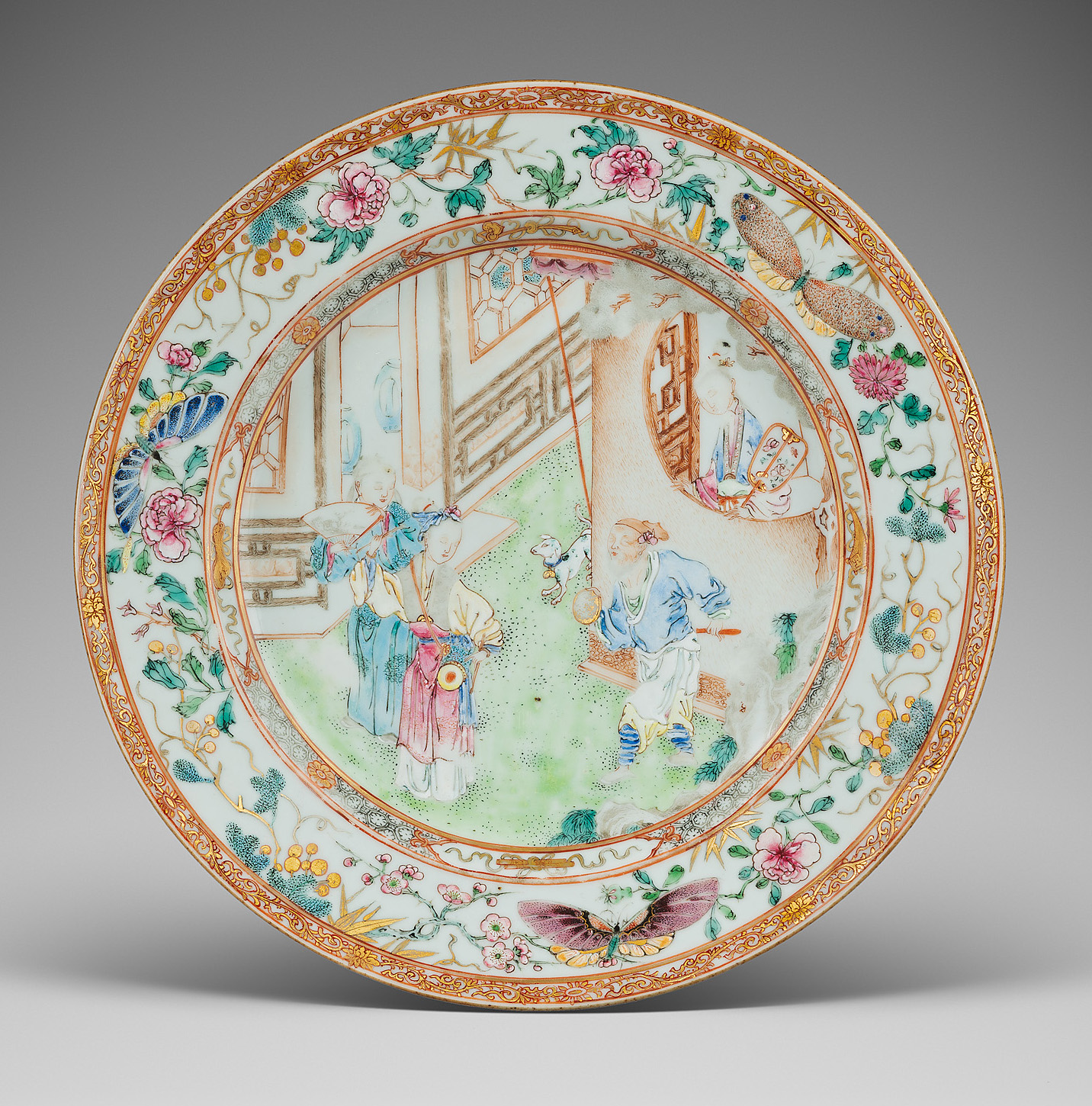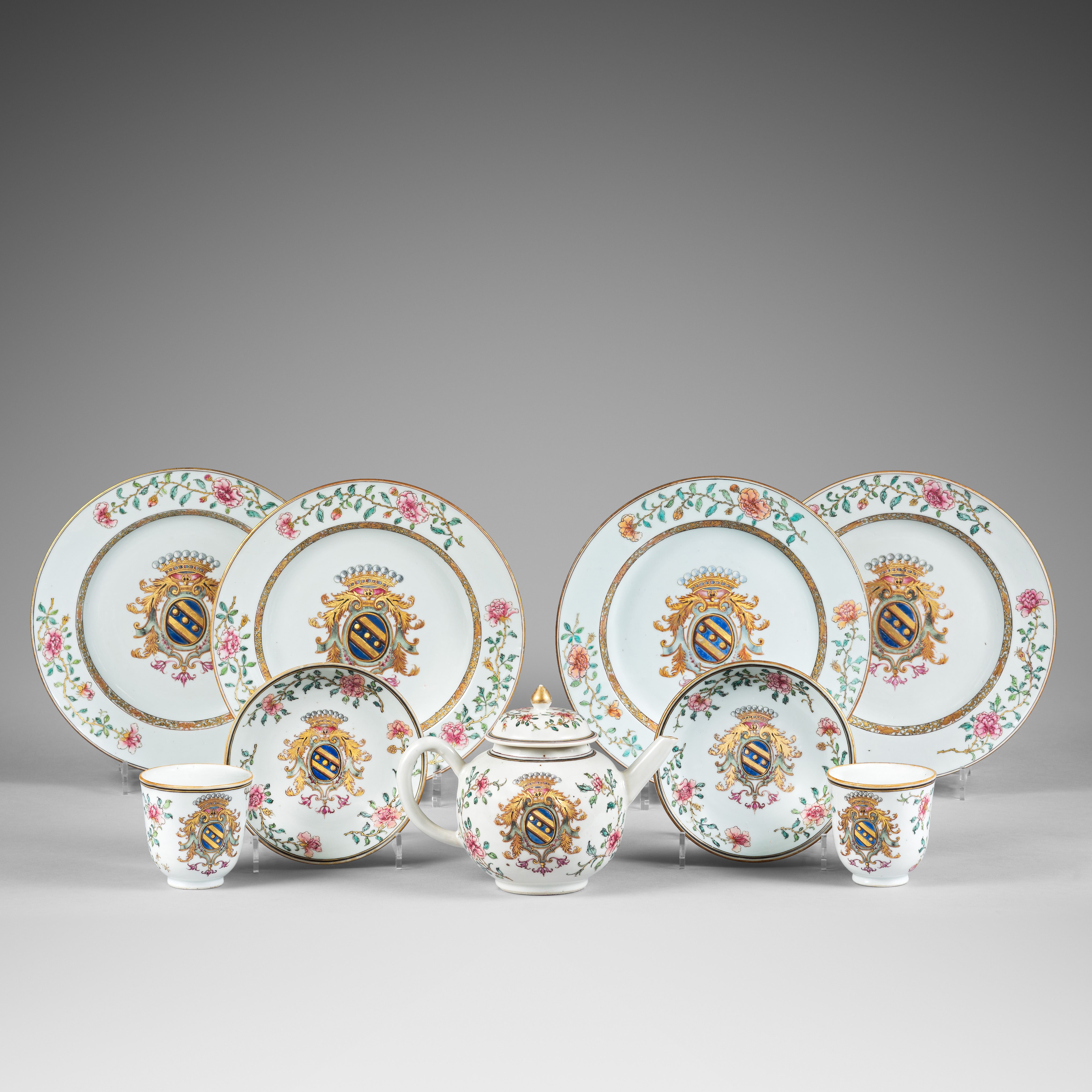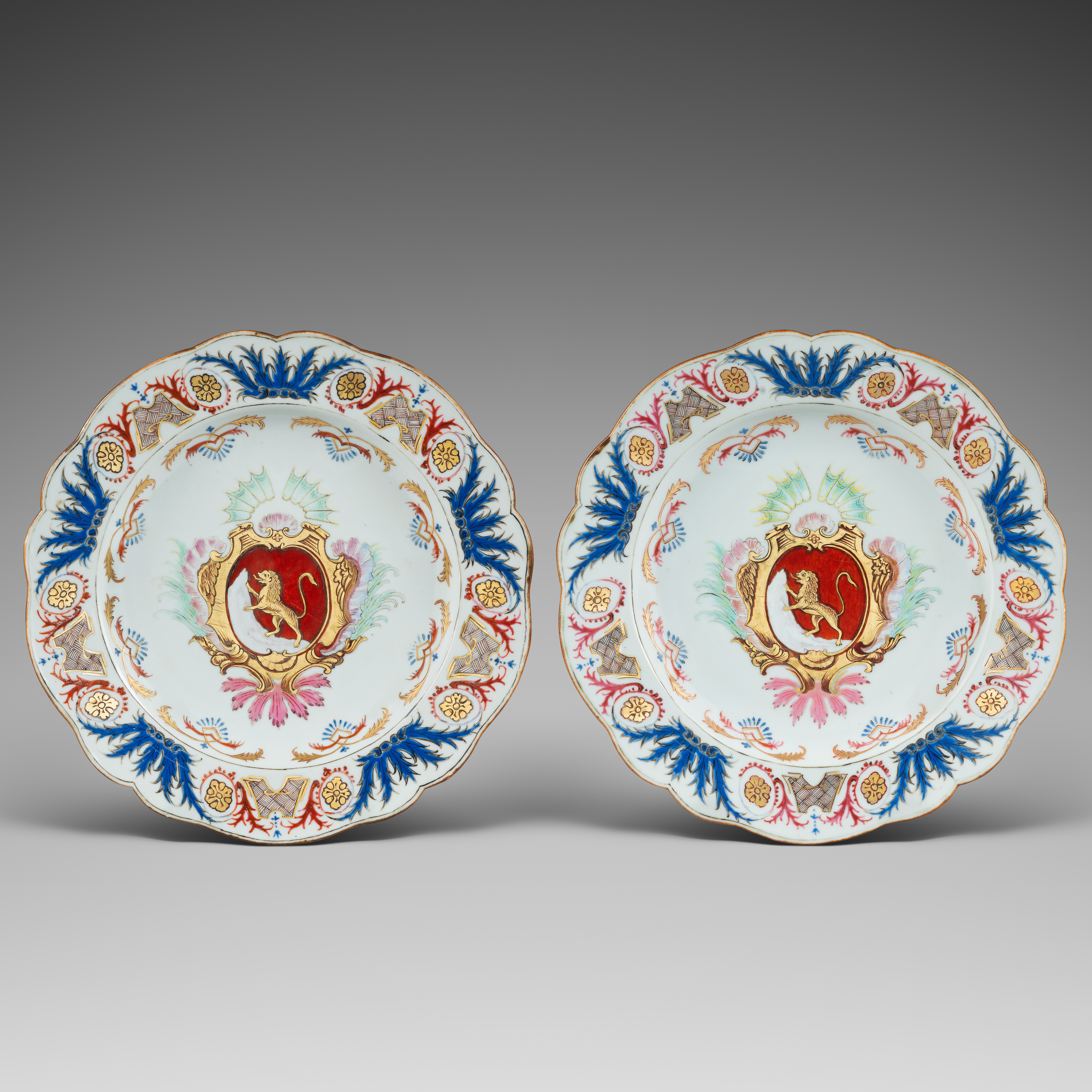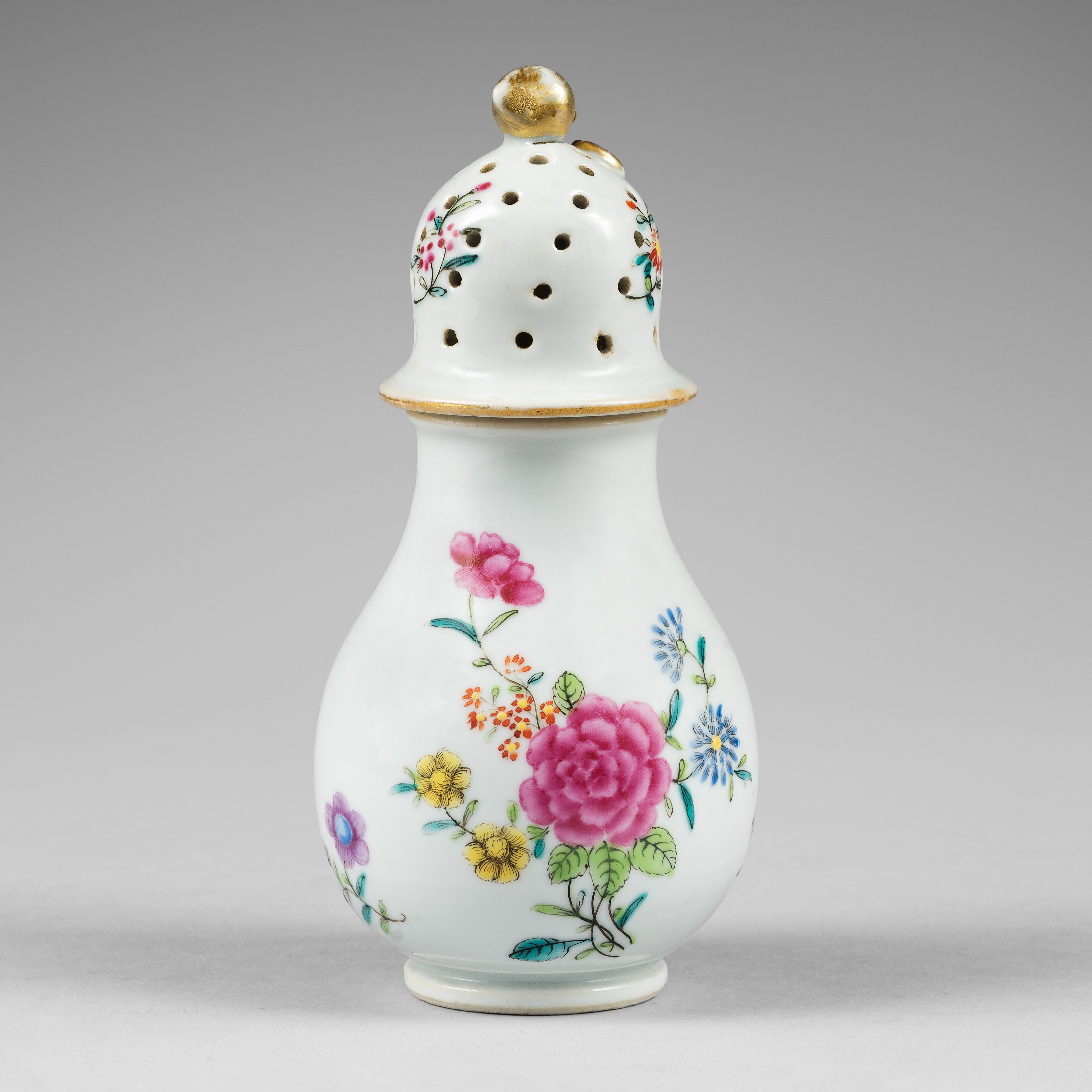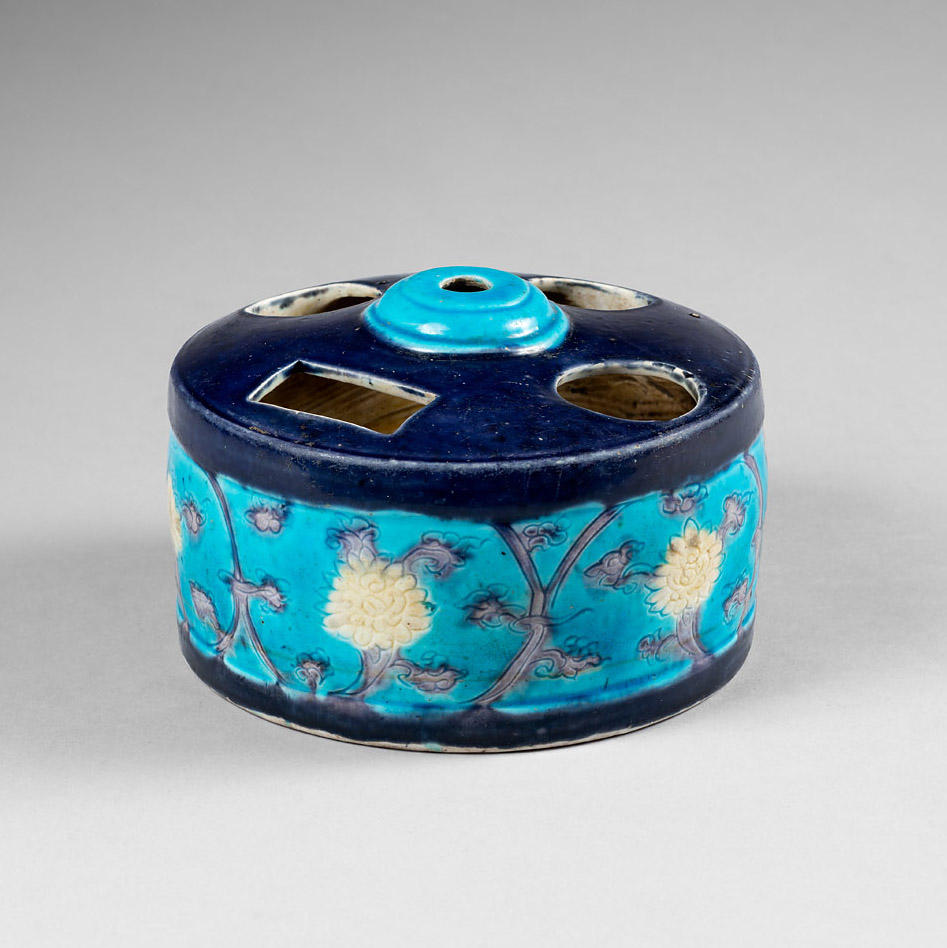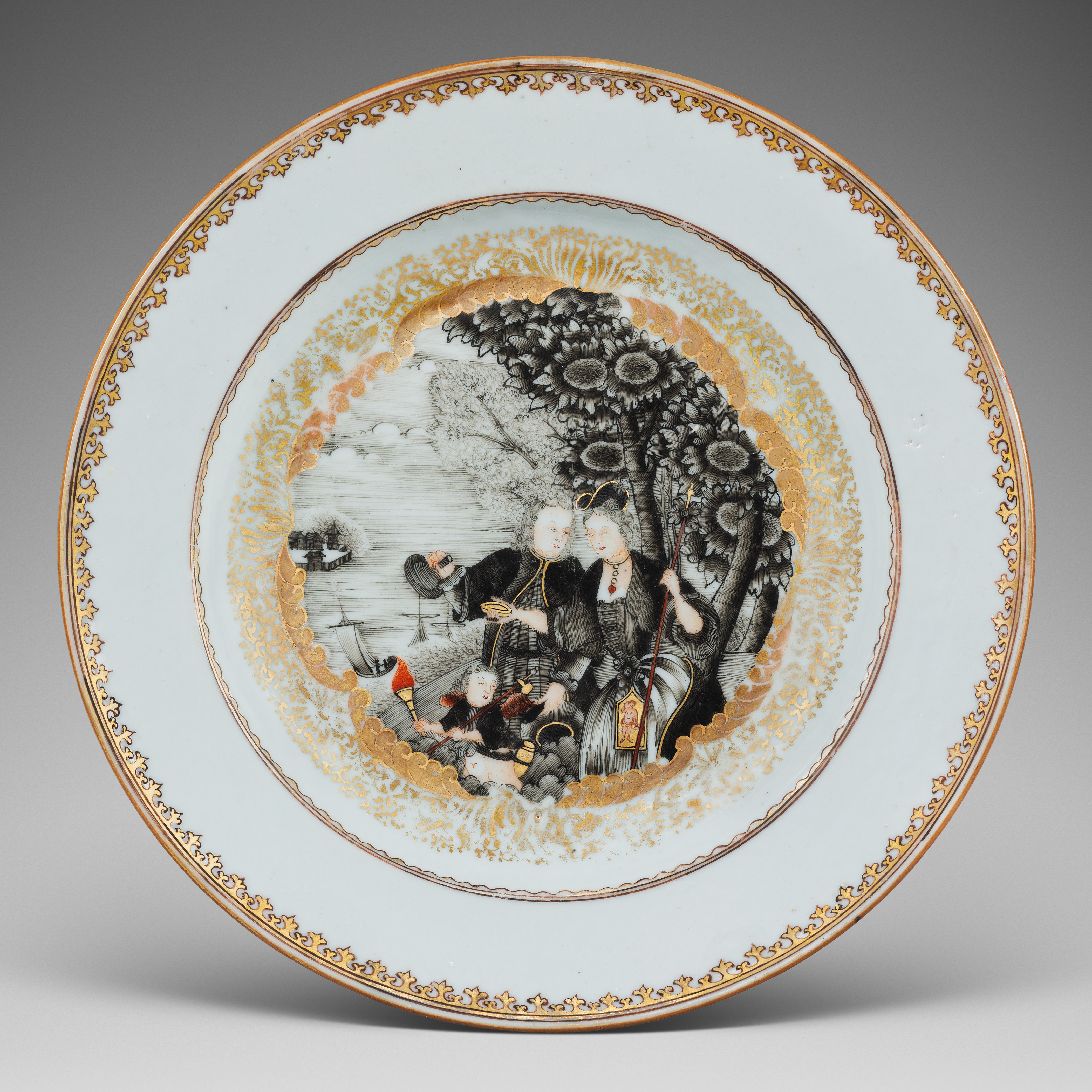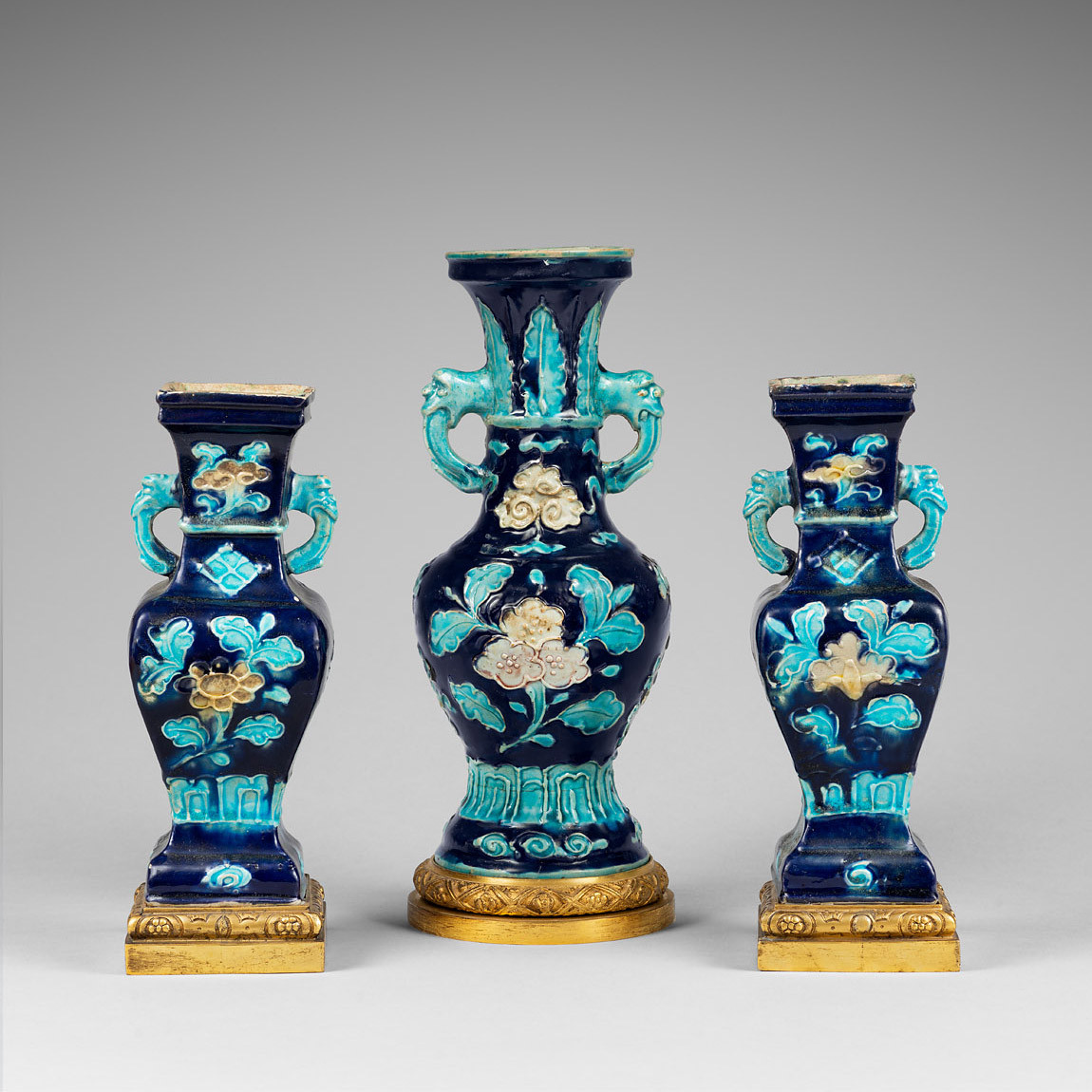
A Chinese blue and white “hu” vase. Kangxi
Of pear shape, stoutly potted, with a slightly spreading neck, twin beast mask loop handles, standing on a flared foot, it is decorated in underglaze blue with yin yang symbols ; underneath, a blue band with cut-out leaf motifs and half flowers. The neck with the same band and with a ‘taotie’ masks on napkin and the foot is painted with four beads.
- Country:
- China
- Period :
- Kangxi (1662-1722)
- Material:
- Porcelain
- Dimension:
- 8.26 in. (21 cm)
- Reference :
- E026
- Price:
- upon request
- Status:
- available
Related works
For a vase of this model, but in a larger size (15 in./38 cm), with trigram around the the Yin Yang, see Christie’s, The Pavilion Sale – Chinese Ceramics and Works of Art Including the Quek Kiok Lee Collection, 9 October 2019, lot 234 (Yin-yang symbol is often seen in conjunction with the Eight Trigrams).
Notice
The Taotie is an ancient Chinese mythological creature that is commonly emblazoned on bronze and other artifacts during the 1st millennium BC. Taotie are one of the « four evil creatures of the world ». In Chinese classic texts such as the « Classic of Mountains and Seas », the fiend is named alongside the Hung, Qiongqi, and Taowu. They are opposed by the Four Holy Creatures, the Azure Dragon, Vermillon Bird, White Tiger and Black Tortoise. The four fiends are also juxtaposed with the four benevolent animals which are Qilin, Dragon, Turtle and Fenghuang.
The Taotie is often represented as a motif on dings, which are Chinese ritual bronze vessels from the Shang (1766-1046 BCE) and Zhou dynasties (1046–256 BCE). The design typically consists of a zoomorphic mask, described as being frontal, bilaterally symmetrical, with a pair of raised eyes and typically no lower jaw area. Some argue that the design can be traced back to jade pieces found at Neolithic sites belonging to the Liangzhu culture (3310–2250 BCE). There is also notable similarity with the painted pottery shards found at Lower Xiajiadian culture sites (2200–1600 BCE)
Yin and yang are the fundamental principles of Chinese philosophy and cosmology. The character yin literally means shady, referring to the northern, shaded side of a valley; yang to the southern, sunny side of a mountain. The terms came to denote the positive and negative, male and female principles of universal life and are represented by taiji, the Supreme Ultimate. Taiji is symbolised by a circle, differentiated by a sinuous S-shaped line, on one side which is black, the other white. A small circle of the opposite colour is positioned in the centre of each half. Yang signifies heaven, sun, light, vigour, male, penetration, and is often symbolised by the dragon. Mountains are yang. Yin stands for earth, moon, darkness, quiescence, female, absorption. Valleys and streams have the yin quality. Yin and yang are not opposites, but complementary polarities, since their interaction creates the rhythm that animates the cosmos as a harmonious whole. This being the reason for the symbolic dot in the centre of each exact counterpart.



